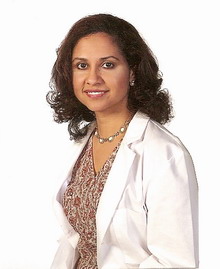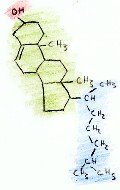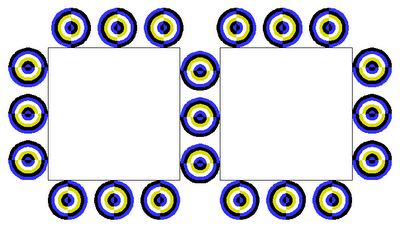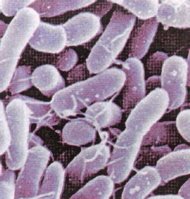
By Dr. Blossom Kunnel
You may be surprised to learn that cholesterol-lowering medications offer women little to no protection from heart attack or heart disease. I know I was. In medical school, my professors spoke of them with such enthusiasm, I was convinced. Then as an emergency room doctor, I continued to believe that statin drugs were the most important medical discovery of the last fifty years.
Then I met Dr Al Sears and he asked me, "Where's the unbiased evidence?" The more I tried to answer that question, the more I realized that what I had been shown as evidence all came from a single source – the drug companies themselves! As I tried to find unbiased proof, all the "evidence" evaporated.
Today I want to share my path of discovery with you and give you safer, more effective ways to improve your cardiovascular health – so you too don't find yourself "duped" like I was.
Searching for the Facts Gives Me the Shock of My Life…
Growing up in India, I was very familiar with our ancient form of natural medicine called Ayurveda. The word Ayurveda means, "the science of life." Practiced for thousands of years, Ayurveda is a complete system of health and healing.
But when I moved to the US at the age of 12, I adopted the American lifestyle and later went to medical school in Philadelphia. After practicing emergency medicine for many years, my connection to Ayurveda felt like just a memory.
By the winter of 2004, my faith in the medical establishment was starting to crack. On my days off, I started going to lectures by leading doctors who integrated both western and alternative medicine. That's when I met Dr. Al Sears. His book, The Doctor's Heart Cure, opened my eyes to the real causes – and treatments – of heart disease.
As my awareness grew, so did my research. I started to uncover studies showing that statin drugs have no real benefit for women. Actually, I didn't have to look very far…
The Journal of the American Medical Association (JAMA), reported: "For women without cardiovascular disease, lipid [cholesterol] lowering does not affect total or CHD [Coronary Heart Disease] mortality…" 1 In other words, statins don't do anything for otherwise healthy women with high cholesterol.
Later, I discovered the University of British Columbia Therapeutics Initiative came to the same conclusion, finding that statins have no benefit to women for the prevention of heart disease.2
Even worse, the Honolulu Heart Program study revealed that statins – and the low cholesterol levels they produce – cause problems for the elderly. This particular study is rare, as it's one of the few that measured cholesterol levels over a twenty-year period. Their results showed that those who maintained low cholesterol for twenty years – from middle age into old age – had the highest risk of death.2
But the surprises kept coming. The ASCOTT-LLA study, the largest clinical trial on the effectiveness of statin therapy in women, found that women who took Lipitor (the world's most popular statin) had 10 percent more heart attacks than the women who took the placebo.3
Returning to the Roots of Natural Medicine
After recovering from my initial shock, I went back to my roots. I found that Ayurveda had reliable – and effective – ways of dealing with heart disease. In fact, many were the very same herbs used daily by doctors here in the West.
But I don't limit myself to the Ayurvedic approach. Nutrients like Niacin and CoQ10 are essential. Here's a list of the 3 treatments I use most often for heart health:
Fenugreek: Recent studies show that one gram of fenugreek a day helped to lower blood sugar and improve sensitivity to insulin. It also lowered triglyceride levels and boosted HDL (good cholesterol) 4 My usual recommendation is to start with 500 mg of fenugreek twice a day.
To take fenugreek the traditional Ayurvedic way, put a bunch of the dried leaves in a bowl of water and let it sit overnight. In the morning, strain the mixture and drink as a tea throughout the day.
Niacin: Also known as vitamin B-3, niacin favorably alters both LDL (bad cholesterol) and triglycerides and increases HDL. Niacin is integral to the production of fats in the human body. Niacin even plays a role in the production of estrogen, progesterone, and testosterone – the sex hormones.
The best source of niacin in foods is in nuts and dried beans. In addition, many meats such as liver, poultry and fish contain niacin. You can also take niacin as a supplement. I recommend 500 mg once a day.
CoQ10: There have been at least 100 studies at major universities and hospitals linking CoQ10 deficiency with heart disease. CoQ10 is an enzyme required for deriving energy from oxygen. Without it, organs that need a lot of energy like your heart, brain, kidneys and liver suffer.
Statins actually block the production of CoQ10. This negative effect happens to 100 percent of the patients who take them. Ironically, the depletion of CoQ10 weakens your heart.
In my experience, close to 80 percent of my female patients are deficient in CoQ10. I recommend 100 mg of CoQ10 per day to anyone who is generally healthy. If you have high blood pressure, heart disease, high cholesterol, gingivitis, age related memory loss, chronic fatigue or are a vegetarian, increase your dose to 200 mg per day.
CoQ10 is available at many nutrition stores but you may have to do some searching to find the adequate therapeutic doses I recommend. Coenzyme Q10 is soluble in oil only. So like vitamin E, you should eat some kind of fat or oil with your CoQ10 or your gut won't absorb it very well.
1. Walsh JME, Pignone M. Drug Treatment of Hyperlipidemia in Women. JAMA. 2004; 291:2243-52.
2. Fallon S. Enig M. Dangers of Statin Drugs. HealthKeepers Magazine. Vol. 8, Issue 2. 2006.
3. Wise Traditions Journal. Vol. 6, Number 3. Fall 2005.
4. Gupta A, Gupta R, et al. Effect of Trigonella foenum-graecum (fenugreek) seeds on glycemic control and insulin resistance in type 2 diabetes mellitus: a double-blind, placebo-controlled study. J Assoc Physicians















